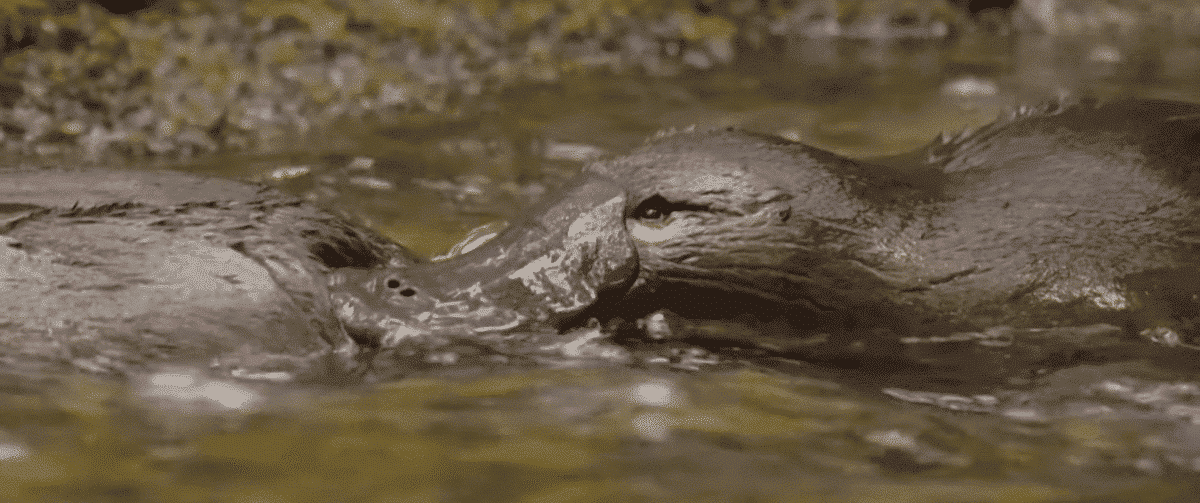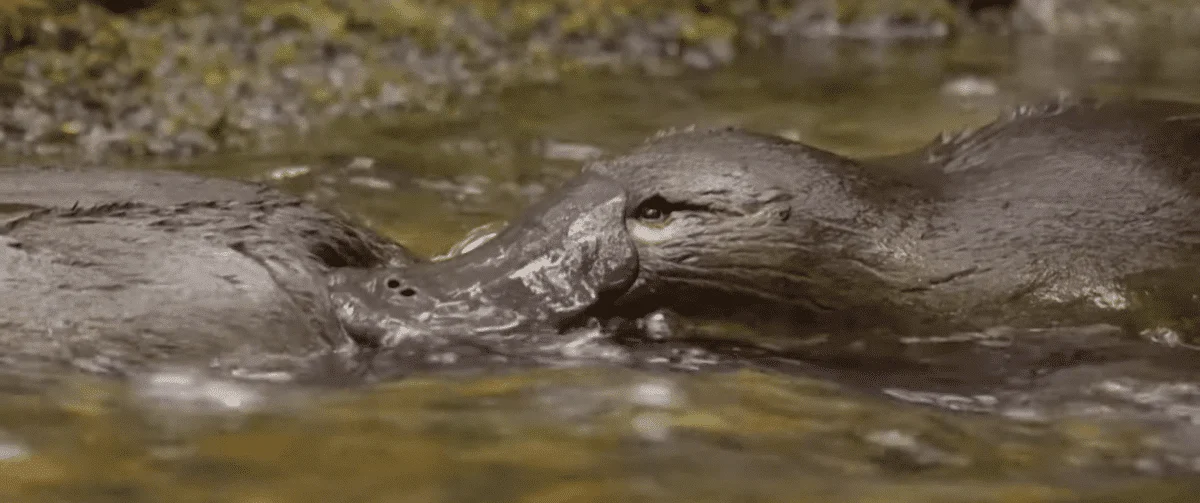The platypus, a semi-aquatic mammal endemic to eastern Australia, including Tasmania, stands out as one of the most bizarre yet fascinating creatures in the animal kingdom. This article explores platypus courtship and reproduction, highlighting their unique mating rituals and life cycles.

The Platypus
The platypus (Ornithorhynchus anatinus) is a remarkable example of nature’s ingenuity. With a bill resembling a duck’s, a tail akin to a beaver’s, and webbed feet, it appears as a living mosaic of various animals. Despite its odd appearance, the platypus is a highly adapted mammal, thriving in freshwater environments across eastern Australia.
A Mammal Like No Other: Egg-Laying and Venom
As one of the few monotremes (egg-laying mammals), the platypus shares this rare characteristic with only four other species, including the echidna. The female platypus lays one to three eggs and incubates them by curling around them. After about ten days, the eggs hatch, revealing tiny, vulnerable offspring.
Adding to their uniqueness, male platypuses possess venomous spurs on their hind legs. This venom, more potent during the mating season, is thought to be used in competition with other males for mates. While not lethal to humans, it can cause severe pain and swelling.
The Platypus Mating Ritual
The mating behavior of platypuses remains largely enigmatic due to their reclusive nature. However, recent observations, including the video footage, provide rare insights. Males follow the scent trails of females, leading to intricate courtship displays. The video captures a male named Scoot following a female named Zoom. The pair engages in what is described as a ‘platypus love donut,’ where they intertwine around each other, a behavior indicative of their unique mating ritual.
Reproductive Challenges and Conservation
The platypus faces numerous challenges in its natural habitat, including environmental changes and human activities. These factors have a direct impact on their reproductive success and overall population stability. Conservation efforts are crucial to ensure the survival of this extraordinary species, which has remained largely unchanged since prehistoric times.
Fascinating Platypus Facts
- Electroreception: Platypuses use electroreception to locate prey underwater, a trait shared with few other animals like sharks.
- Biofluorescence: Under UV light, their fur exhibits a green-blue glow, the purpose of which is still a mystery.
- Diet: Primarily carnivorous, they feed on insect larvae, worms, and small freshwater creatures.
- Habitat: Platypuses inhabit freshwater rivers and lakes, often building burrows along the banks.
- Conservation Status: Classified as ‘near threatened,’ they face risks from habitat loss and environmental changes.
Preserving the Platypus Legacy
The platypus, with its peculiar appearance and unique reproductive strategies, continues to captivate scientists and nature enthusiasts alike. As we unravel more about their secretive lives, it becomes increasingly important to protect these remarkable creatures and their habitats. Through conservation efforts and continued research, we can ensure that the legacy of the platypus endures for generations to come.
You might also enjoy:
Check this Out: Platypuses Can Glow in the Dark
Rare White Platypus Spotted: A Phenomenal Discovery
Masters of Disguise: The World’s Most Elusive Animals
Join our Forum for free today!

- The Bond Between a Wild Baby Bison and Her Rescuer - July 20, 2024
- An Excited Husky’s First Ever Time in Snow - July 20, 2024
- Top 20 Colorful Species To Brighten Your Day - July 14, 2024


